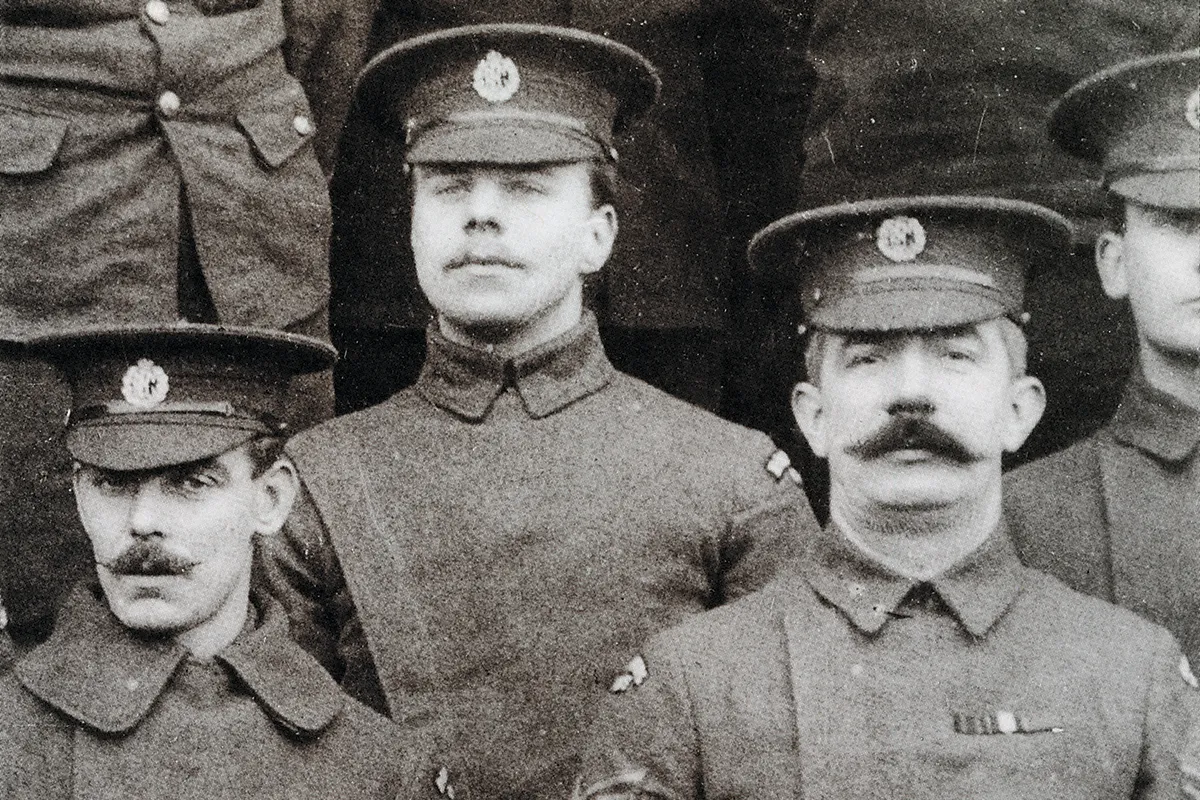“She sails like a lost soul on the Arctic Seas – the ghost ship they call the Baychimo. She floats wraith-like among the icebergs and flees, creaking, in the teeth of turbulent gales. She always survives, to become once again the fleeting entry in the logbook of a passing ship. Yet she has no man’s hand to guide her. The Baychimo was abandoned by her crew 42 years ago – left to be crushed like a walnut in the jaws of a merciless icefloe,” reads an evocative article that was published in the Leicester Mercury on 13 May 1974.
When former research engineer Peter Day began uncovering his genealogy 20 years ago, he had no idea that his family was inextricably linked with the “Marie Celeste of the Arctic”, to quote the article’s headline. But as he scaled the branches of his family tree, Peter’s attention was drawn to three brothers whose lives read like something out of Boy’s Own – and one of them had been on the ship’s last voyage.
When tracing his father’s family history, Peter discovered that three of his great uncles had been in the military, so turned to the service records on Ancestry and Findmypast, and at the Ministry of Defence’s Army Personnel Centre at Kentigern House in Glasgow.
Frederick: Flying pioneer
Great uncle number one, Frederick Thomas McElwee, was born to William Philip McElwee and Fanny Fullman in the barracks at Chatham in 1879, where his father was serving in the Royal Engineers during his 33 years in the British Army.
“A half-remembered story, told to me by my father when I was very young, went that Frederick had himself joined the Royal Engineers before the first planes and later found himself in the Royal Flying Corps with the low service number of 6, and became the Royal Air Force’s longest-serving officer.

“As a little boy at Chatham, Frederick probably watched the first tentative experiments with flying balloons in the shrubland behind the barracks, testing their potential for use in warfare.” He joined the Royal Engineers as a boy sapper in 1894 aged just 15. “I tracked down his Medal Index Card from the First World War and his RFC number turned out to be ‘326’ rather than ‘6’, but still remarkably low.
“He went out to fight in the Second Boer War with a fortress company working on the railways, but soon transferred to a balloon company. He was involved in the first deployment of balloons in warfare, when they were used for spotting for artillery.” The balloon companies were subsumed by the RFC in 1912 and Frederick went with them – and again, when the corps became the RAF in 1918.
“Frederick’s service spanned 48 years, eight months and 29 days – from a time before aeroplanes to the Battle of Britain and the first jet aircraft; from semaphore to radar and radio navigation. Few people can have seen such changes in their military career.”
William: Fighting on the front lines
The next brother was William (born 1886, Chatham). He joined the Army Ordnance Corps in 1909 and transferred to the RFC in 1915. While fighting in France, he was admitted to the British General Hospital at Rouen – with German measles. “His stay in the field hospital would affect the course of his life dramatically.”
William was promoted to corporal, then sergeant, flight sergeant and temporary sergeant major, and mentioned in dispatches several times. He transferred into the RAF when it was formed, and was promoted to chief master mechanic. “He was the most senior non-commissioned officer in the corps. It was his job to make sure the aeroplanes kept flying – this involved overseeing the servicing and repairs of the aircraft. It was a huge responsibility.”
In July 1919 the French government awarded him the Médaille d’honneur en argent, and the following year he was awarded an oak leaf emblem for his mentions in dispatches.
Percy: Serving on the seas
But it was the exploits of the third of his great uncles, Percy (born 1884, Chatham), that Peter was most fascinated by. Percy signed up to the Royal West Kent Regiment in the First World War and fought in some of the bloodiest battles – the Somme, Passchendaele and Cambrai. He then joined the Merchant Navy, and signed on with the Hudson’s Bay Company in Canada. “The family knew he’d been on a ship called the Baychimo, but that was all.”
In the 1930s, the Baychimo hit the headlines. Percy had been the ship’s chief steward on its final voyage. Peter wrote to the Hudson’s Bay Company Archives in Manitoba, and their records helped him to understand what happened.
On 6 July 1931, the Baychimo left Vancouver, British Columbia, sailing eastwards and at every stop exchanging goods for valuable animal pelts. She reached the end of her run, Victoria Island, and turned to come back, but winter came early that year. “On 1 October, the ice closed in and sealed the ship’s fate.” With the ice threatening to crush the Baychimo, the captain sent out an SOS. “By 15 October, their plight seemed so desperate that the Hudson’s Bay Company sent two aircraft from the base at Nome, Alaska, 600 miles away. They rescued 22 of the crew, leaving the skipper and 14 men, including Percy, behind to wait for the ice to melt and release their ship and its precious cargo.”
The men built a hut on the ice about a mile inland to shelter from the bad weather. “However, a big storm hit one night and they awoke to find that the ship had disappeared. They thought it had sunk, and headed for the mainland to return home. A few days later, however, an Inuit seal hunter brought the astonishing news that he had seen their ship some 45 miles to the south-west.”
Baychimo floated on for many years being spotted and, in some cases, boarded by curious sailors. The last sighting was in the 1960s. As late as the 1990s, the Hudson’s Bay Company released a statement saying they had no proof the ship had sunk. “It’s quite amazing to think she stayed afloat for so long,” says Peter.
The journey has been a fascinating one for Peter, full of high-flyers and adventurers. “It’s exciting stuff – my relations weren’t stay-at-homers, they went out and lived full lives.”
Do you have a family story to share with Who Do You Think You Are? Magazine? Contact us on wdytyaeditorial@ourmedia.co.uk to appear in the magazine!
